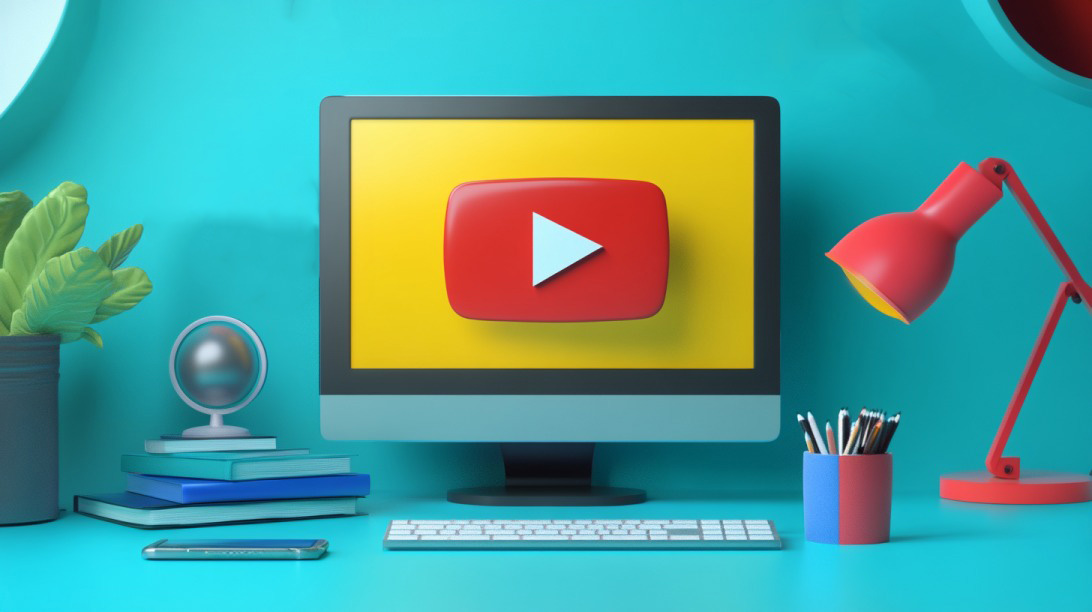In 2025, YouTube continues to dominate the digital education space. With over 2.7 billion monthly active users, it remains the most powerful platform for reaching self-directed learners.
YouTube isn’t just where people watch entertainment anymore, it’s where they study for exams, learn new skills, learn remotely, prepare for certifications, and explore entire academic disciplines.
The platform’s transformation into a global, decentralized learning environment makes it one of the best career paths for modern educators.
Yet, entering this space is no longer as simple as uploading a few tutorial videos. With over 500 hours of content uploaded every minute, algorithmic competition is fierce, and educational creators must produce not only accurate content—but content that’s searchable, structured, and sustainable.
Below is a practical, step-by-step guide to building an educational YouTube channel that actually grows in 2025, based entirely on data, current platform behavior, and real creator outcomes.
Step 1: Define Your Niche with Specific, Layered Depth
Before you shoot your first video, you must define exactly what you teach, for whom, and why it matters. General educational content doesn’t scale anymore. YouTube favors creators who serve one focused audience over time. Niche depth is what drives subscriber retention, search indexing, and algorithmic trust.
Don’t just choose a subject like “history” or “biology.” Drill deeper. Are you teaching high school biology exam prep? Or world history from a geopolitical lens for college freshmen? The more clearly you can define your audience’s pain point and learning style, the easier it becomes to structure content around it.

- Higher average watch time and session duration
- Easier to plan 50+ videos in advance
- Stronger chance of building community trust
Successful channels in 2025 often revolve around layered topic depth rather than surface-level variety. Think of your channel as a digital curriculum—viewers should be able to start anywhere and still follow your teaching arc.
Step 2: Build a Strategy That Balances Search and Suggestions
YouTube discovery in 2025 is powered by two engines: search (SEO) and algorithmic suggestion (AI-based personalization). Educational creators must create content that performs well under both systems.
Relying only on keyword-rich titles or trending topics is not enough. Your channel’s long-term growth depends on content discoverability across multiple surfaces—homepage, browse, suggested videos, and Shorts.
| Discovery Surface | Strategy to Leverage It |
| Search Results | Use specific keywords, question-based titles, accurate captions |
| Homepage & Browse | Post consistently, use click-enticing thumbnails and titles |
| Suggested Videos | Interlink videos via playlists, end screens, and CTA hooks |
| Shorts Feed | Offer micro-lessons, quick tips, or myth-busting facts |
Tools like TubeBuddy and YouTube’s Research tab allow you to reverse-engineer what questions your target audience is typing in. Focus your first 15–20 videos on timeless questions that get searched year-round (e.g., “What is mitosis?” or “How to solve a linear equation?”).
Bonus: Keep in mind that many digital tools can help you in your work while they also support educational equity!
These act as the foundation of your content library and will attract evergreen traffic for months or even years.
Step 3: Script to Teach, Not Just to Perform

The biggest mistake new educational creators make is trying to “entertain” more than they teach. In 2025, students and self-learners are looking for efficient clarity, not personality-driven fluff. Your scripting should favor structure, logic, and clean transitions between concepts.
- Hook (0–15 sec): State what you’re teaching and why it’s useful.
- Context (15–60 sec): Quickly orient the learner with what they need to know.
- Main Content (1–6+ min): Break down the topic into logical subtopics.
- Recap/Call-to-Action: Summarize takeaways and suggest the next video.
Visual clarity is equally essential. Don’t speak over complex visuals or bombard the screen with text. Use on-screen callouts, diagrams, and examples. Modern learners expect a balance of audio + visual + spatial teaching. Software like OBS Studio, Canva, or ScreenPal helps achieve professional results on a budget.
Step 4: Standardize with Modular Formats and Templates
One of the most sustainable strategies in 2025 is to create modular formats that you can reproduce week after week. This helps with workload management, but also trains your audience—and YouTube’s algorithm—to expect consistency.
- Quick Tutorials (3–5 min): Answer specific questions
- Concept Explainers (8–12 min): Deep-dive into one key idea
- Interactive Challenges: Solve problems on screen, invite users to follow
- Mini-Series Playlists: Break a course into video modules
Creating templates for your intros, transitions, and lesson structure not only saves time but also improves branding. Repeated structure also boosts retention, which is a key ranking factor for YouTube’s recommendation engine.
Step 5: Grow with Social Proof and Viewer Signals

As your content library grows, so should your channel’s perceived authority. YouTube uses multiple social engagement signals to evaluate whether your videos should be promoted across browse and suggested feeds.
- Click-through rate (CTR)
- Average watch time
- Likes, comments, and saves
- Returning viewer ratio
According to SocialWick, a creator data aggregation service, channels with high returning-viewer ratios (25%+) and consistent video theme alignment are up to 4.2× more likely to be picked up by YouTube’s suggested video system within their first 90 days.
Their data also emphasizes that videos which maintain at least 50% audience retention at the 2-minute mark tend to perform exponentially better across mobile search and autoplay suggestions. This means that how your audience engages in the first few minutes—not just how many people click—is now a decisive growth factor.
In other words, social trust matters. Focus on building a learning community, not just collecting views. Encourage interaction, respond to comments, and structure your playlists like step-by-step guides. This keeps learners engaged for multiple sessions and increases algorithmic confidence in your channel.
Step 6: Monetize Beyond AdSense
Monetization for educational creators in 2025 goes far beyond YouTube ads. In fact, most profitable channels make less than 30% of their revenue from AdSense. Instead, they build around education-adjacent value streams.
| Income Stream | Application for Educators |
| Courses & Downloads | Sell topic guides, notes, worksheets |
| Channel Memberships | Offer exclusive live sessions or practice exercises |
| Sponsorships | Partner with EdTech brands, apps, book publishers |
| Affiliate Marketing | Recommend relevant tools, calculators, or software |
| Private Coaching / Tutoring | Upsell 1-on-1 sessions via Calendly or TutorOcean |
Educational channels also scale well into email newsletters, Notion databases, and Discord study groups, all of which support revenue through community-based trust rather than viral spikes.
Final Thoughts
To succeed in 2025 as an educational creator, you must think less like an influencer and more like a curriculum designer. Your YouTube channel is your virtual classroom, and each video is a lesson in a broader course.
When you plan for continuity, reinforce concepts across formats, and build videos with both search intent and long-term retention in mind, your channel stops being a content stream—and starts becoming a learning destination.
Educational YouTube isn’t a trend—it’s the future of asynchronous, global learning. And if you build with structure, clarity, and intent, you’ll find an audience eager to learn what only you can teach.

